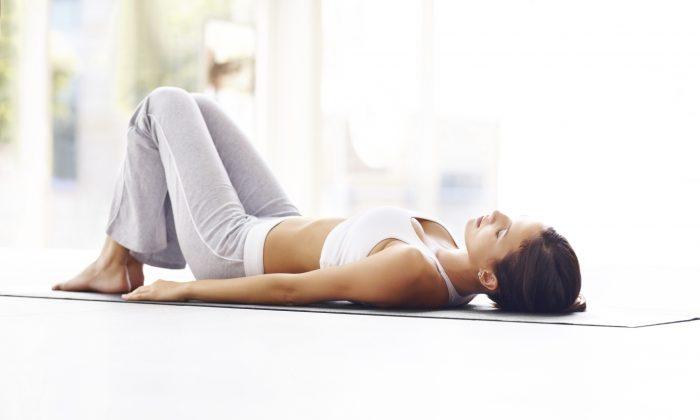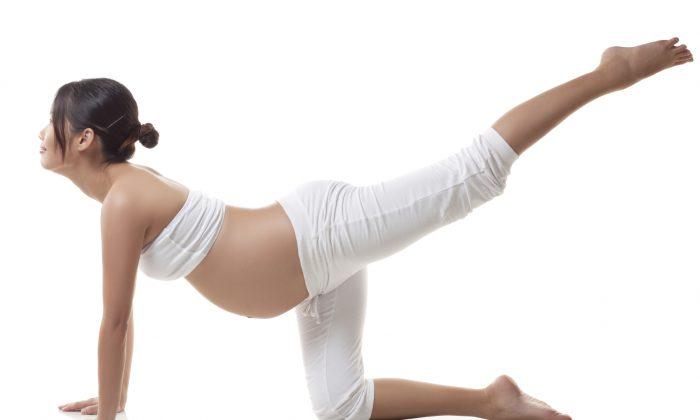Have you ever wondered whether or not to press your lower back to the floor during abdominal exercises? This is actually an important and fundamental question to consider.
Our spines are normally “S” shaped, with gel-like discs between each vertebra.
The cervical spine, or neck, is shaped like a backward “C.” The thoracic spine, where the ribs attach, is shaped like a forward “C.” And the lumber spine in the lower back is again shaped like a backward “C.” This results in an S-curve shape, which functions to absorb shock and provide spring so we can move safely and optimally.
To maintain a healthy S-curve, the thoracic spine tends to need more mobility, while your cervical and lumbar spines need more stability. This can be seen in people with poor posture. For example, those with kyphosis (excessively rounded upper and mid backs) generally need to obtain more mobility in this area, while those with lordosis (excessive arch in the lower back) generally need more stability.
While the discs between our vertebrae are durable, over time the gel can burst out, get thinner, or bulge. This is just one reason we want to ensure strong spines that have proper mobility and stability.
When we press our lower spines to the floor, we decrease the natural curve of our lower back—when what we actually need to be doing is providing stability for the lumbar spine in its natural curve.
You can find the natural alignment of your spine by lying down on the floor and following the instructions below:
1. Lie face up with knees bent and hip-distance apart. Feet are flat on the floor.
2. Place your hands on the hip bones. These two protrusions should be on the same plane—like the headlights of a car—so that one is not higher than the other, as well as not in front or behind the other.
3. Locate your pubic bone. You can do this by making a triangle out of your two thumbs and forefingers. The right thumb will be on the right hip bone and the left thumb on the left hip bone, with the two forefingers facing in toward the pubic bone. All three points of this triangle—the two hip bones and the pubic bone—should be on the same plane.
If the head of the triangle, the pubic bone, is pointing to the sky, your pelvis is in a posterior tilt. This is the same as pressing the lower spine to the floor and decreasing the natural curve of the lower spine.
If the head of the triangle is facing down toward the floor, your pelvis is in an anterior tilt, and you are increasing the curve of your spine.
When you place your pelvis in an anterior or posterior tilt, you can alter the mechanics of the rest of the body. Over time, this can lead to injury.
4. Once the pelvis is in place, turn your attention to the thoracic spine. You should feel your ribs flat on the floor, maximizing your back’s surface contact. If your mid back is arched off the floor, take a long exhale so the ribs relax down. Maintain this relaxed position as you continue to breathe.
5. Lastly, with the chin down, you should feel the back of your head on the floor, rather than jutting out into the air, so that the neck is long.
Once you know where your neutral alignment is on the floor, you can transfer this to standing and other movements. So, rather than just aiming to strengthen the abdominals by doing an insane amount of crunches, choose exercises that strengthen the body in proper alignment.
Good examples of these types of exercises are the dead bug, quadruped supermans, planks, and rollouts.
Remember, exercise is not there just to help us look good. It should also help us move well, prevent injury, and mitigate physical deterioration as we age.
Ashley Whitson is an ACE-certified personal trainer, Pilates certified instructor, pre/postnatal exercise specialist, Functional Movement Systems professional, Neurokinetic Therapy practitioner, and professional dancer in New York. www.ashleywhitsonpersonaltrainernyc.com




Friends Read Free